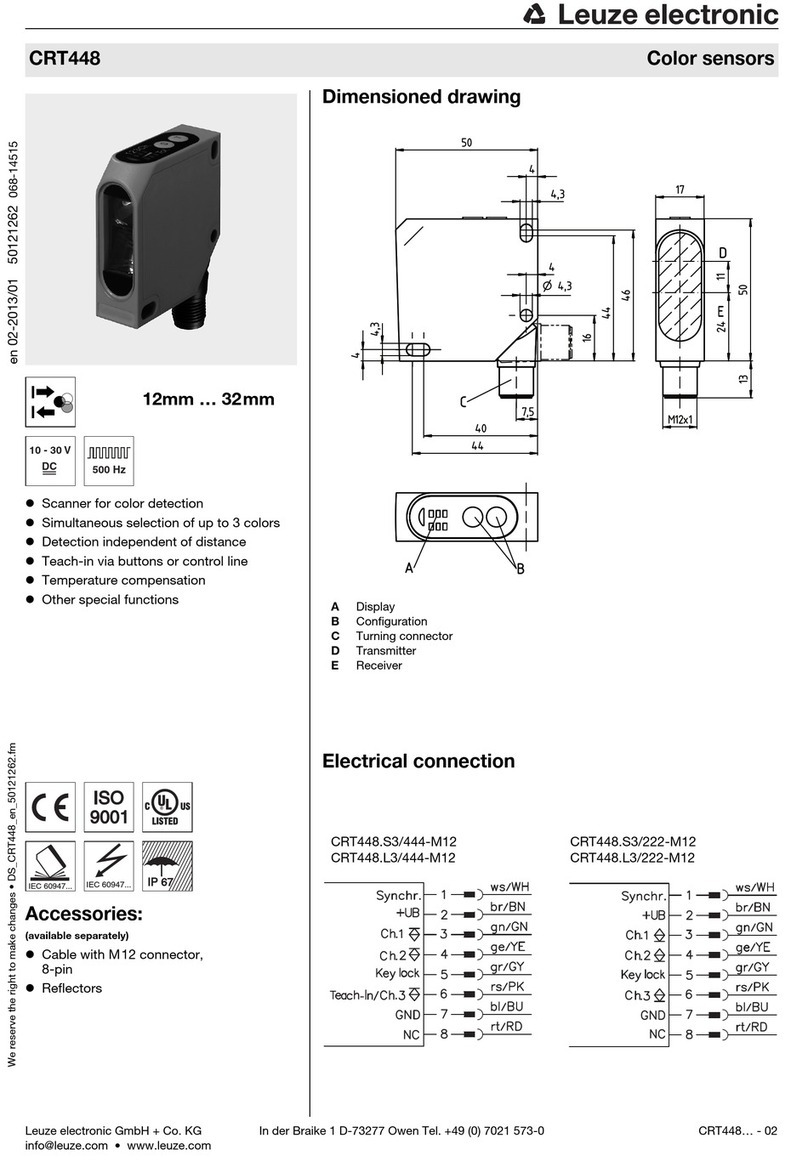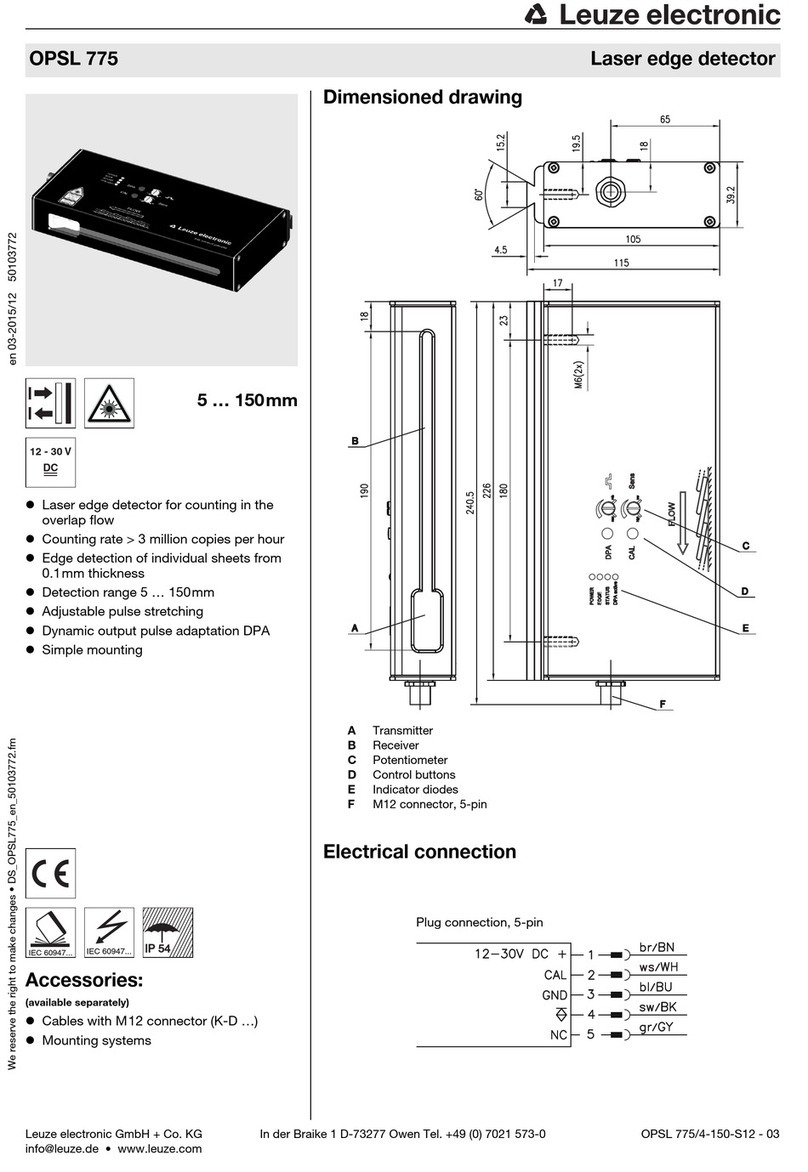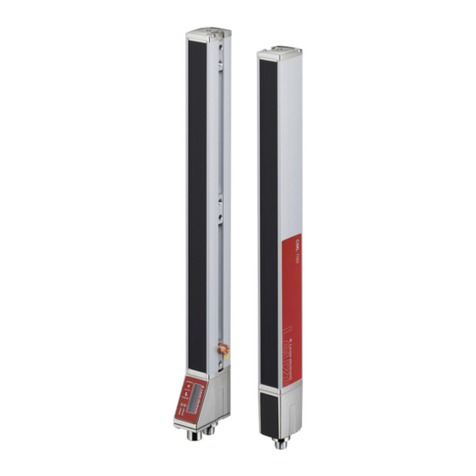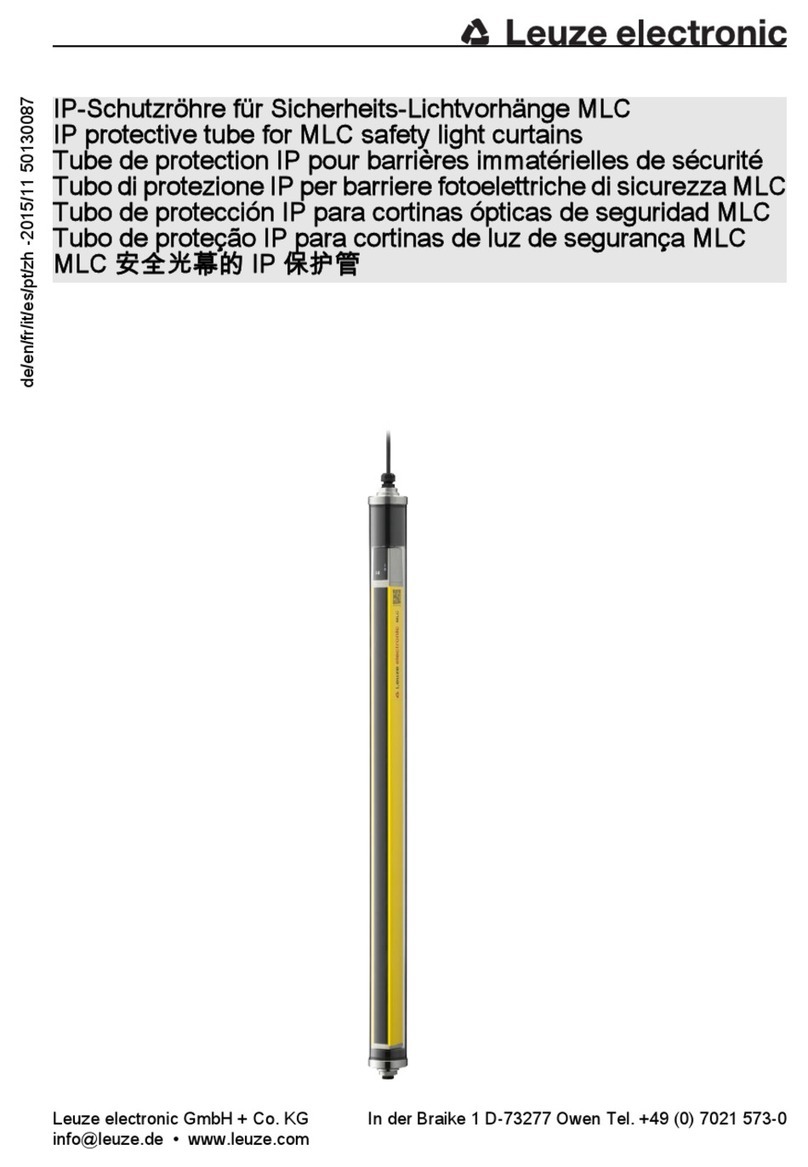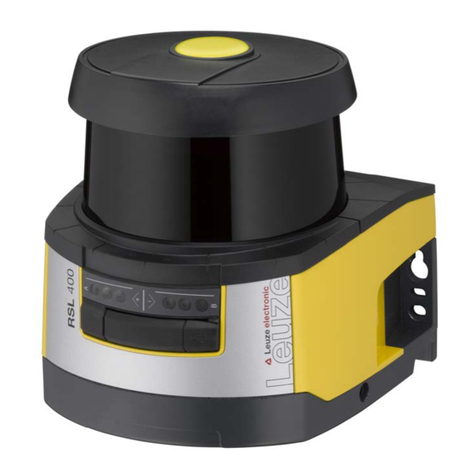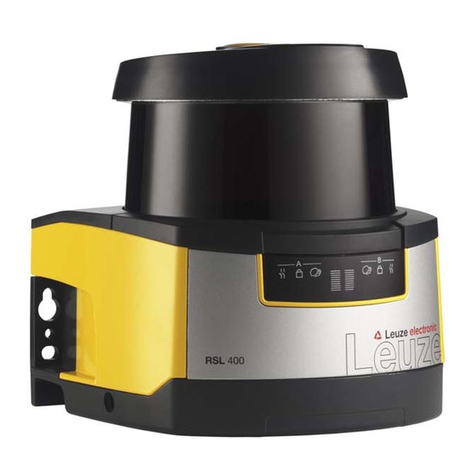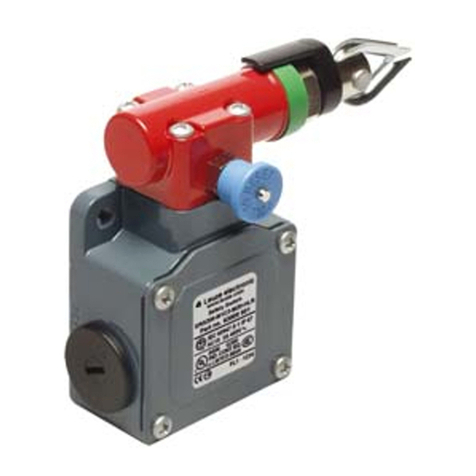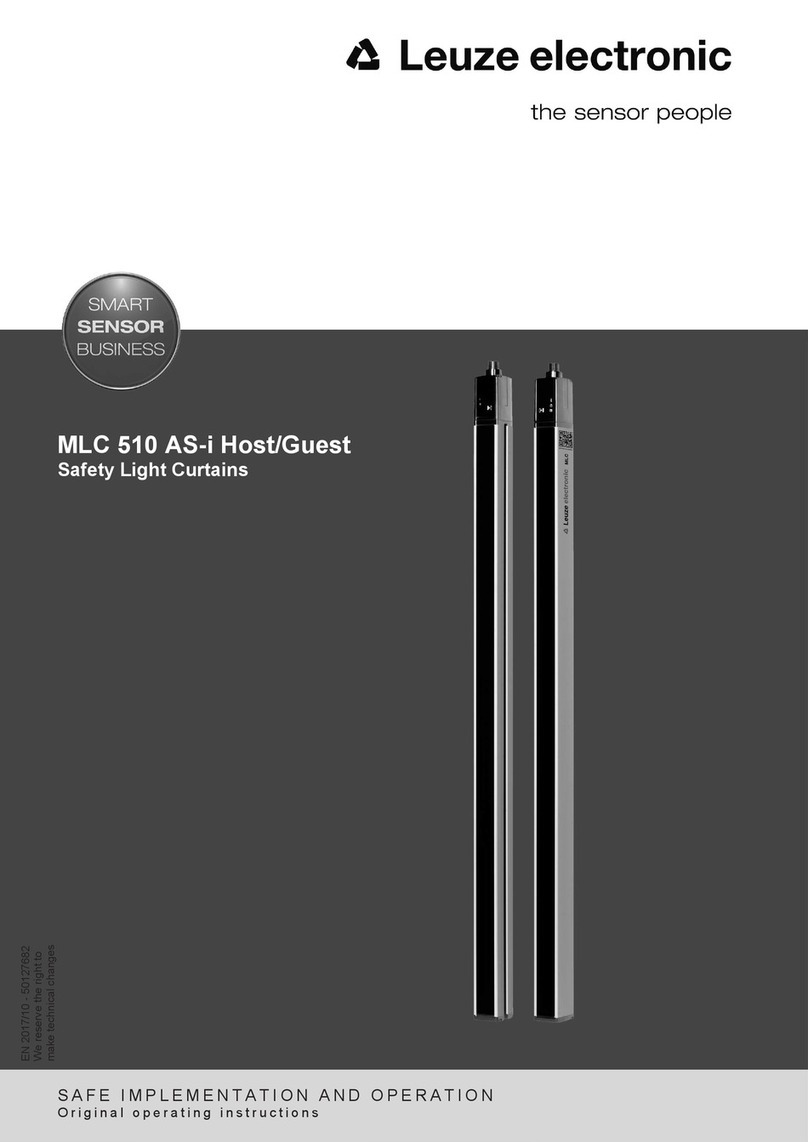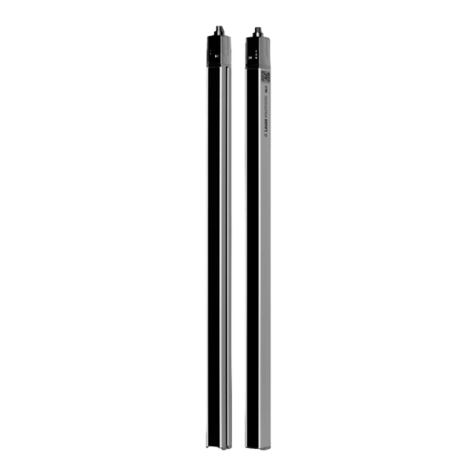
Table of contents
Leuze electronic MLC 520S 3
Table of contents
1 About this document ............................................................................................5
1.1 Used symbols and signal words ............................................................................................. 5
1.2 Checklists................................................................................................................................ 6
2 Safety .....................................................................................................................7
2.1 Intended use and foreseeable misuse.................................................................................... 7
2.1.1 Intended use........................................................................................................................7
2.1.2 Foreseeable misuse ............................................................................................................8
2.2 Necessary competencies........................................................................................................ 8
2.3 Responsibility for safety.......................................................................................................... 9
2.4 Disclaimer ............................................................................................................................... 9
3 Device description ..............................................................................................10
3.1 Device overview of the MLC family....................................................................................... 10
3.2 Connection technology ......................................................................................................... 10
3.3 Cascading ............................................................................................................................. 11
3.4 Display elements .................................................................................................................. 12
3.4.1 Operation indicators on the MLC520S transmitter/receiver .............................................12
4 Functions.............................................................................................................14
4.1 Start/restart interlock RES .................................................................................................... 14
4.2 EDM contactor monitoring .................................................................................................... 15
5 Applications ........................................................................................................16
5.1 Point of operation guarding................................................................................................... 16
6 Mounting..............................................................................................................17
6.1 Arrangement of transmitter and receiver .............................................................................. 17
6.1.1 Calculation of safety distanceS ........................................................................................17
6.1.2
Calculation of safety distance if protective fields act orthogonally to the approach direction.. 18
6.1.3 Minimum distance to reflective surfaces ...........................................................................21
6.1.4 Preventing mutual interference between adjacent devices ............................................... 22
6.2 Mounting the safety sensor................................................................................................... 23
6.2.1 Suitable mounting locations ..............................................................................................23
6.2.2 Mounting with O-shaped mounting brackets ..................................................................... 24
6.2.3 Mounting with C-shaped mounting brackets .....................................................................25
6.2.4 Mounting with L-shaped mounting brackets...................................................................... 27
6.2.5 Mounting with L- and C-shaped mounting brackets .......................................................... 29
6.3 Mounting accessories ........................................................................................................... 30
6.3.1 Deflecting mirror for multiple-side guarding.......................................................................30
6.3.2 Mounting cascading ..........................................................................................................30
7 Electrical connection..........................................................................................33
7.1 Pin assignment transmitter and receiver .............................................................................. 33
7.1.1 MLC520S transmitter .......................................................................................................33
7.1.2 MLC520S receiver............................................................................................................34
8 Starting up the device ........................................................................................35
8.1 Switching on ......................................................................................................................... 35
8.2 Aligning the sensor ............................................................................................................... 35
8.3 Minimum distance for cascade system................................................................................. 37
8.4 Selection of RESTART mode and operation ........................................................................ 37
8.5 Unlocking start/restart interlock ............................................................................................ 39

